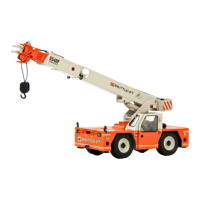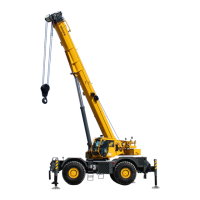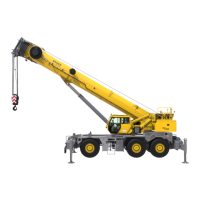BRAKE SYSTEM CD3340B/YB4411
9-4
Published 04/07/2015 Control # 569-00
Parking Brake Solenoid Valve
The parking brake solenoid valve is activated by the parking
brake switch in the operator’s instrument panel. It is a
normally-closed solenoid valve. When the switch is placed in
the ENGAGE position, no current is sent to the solenoid
valve, thus the solenoid valve remains closed and the
parking brake is engaged.
When the parking brake switch is placed in the DISENGAGE
position, electrical current is sent to the solenoid valve. The
solenoid shifts the spool in the valve to open the circuit to the
parking brake. The hydraulic fluid, under pressure,
disengages the brake pads from the brake disc. Even though
the parking brake switch may be in the DISENGAGE
position, in the event of a loss of pressure in the accumulator
below what it takes to apply the service brakes, the parking
brake will engage.
MAINTENANCE AND ADJUSTMENTS
Service Brake Bleeding
When ever a brake line is disconnected, the brake system
must be bled to remove any trapped air. Air in the brake lines
will cause the brakes to be spongy.
NOTE: Before working on the brake system, make sure
the crane is on level ground and that all four wheels
are chocked.
NOTE: The accumulator must be charged before this
operation can be performed. If you are not sure the
accumulator is charged, engage the parking brake,
start the engine and let is run for several minutes.
1. Engage the parking brake and shut off the engine. Block
all wheels on both sides.
2. There are two bleed screws; one for each set of brakes.
Attach a tube to one of the brake bleed screws
(Figure 9-4) and place the other end in a suitable
container.
3. Open the bleed screw and apply the brake foot pedal.
4. Observe the fluid exiting the hose. When there is no air
being released, close the bleed screw with the pedal still
being applied.
5. Repeat steps 2 through 4 using the other bleed screw.
Parking Brake Bleeding
NOTE: Before working on the brake system, make sure
the crane is on level ground and that all four wheels
are chocked.
NOTE: The accumulator must be charged before this
operation can be performed. If you are not sure the
accumulator is charged, engage the parking brake,
start the engine and let it run for several minutes.
1. Engage the parking brake and shut off the engine. Block
all wheels on both sides.
2. Attach a tube to the bleed screw on the parking brake
(Figure 9-5) and place the other end in a suitable
container.
3. Open the bleed screw, then disengage the parking
brake.
4. Observe the fluid exiting the hose. When there is no air
in the fluid being released, close the bleed screw with
the parking brake still disengaged.
5. Engage the parking brake.
6. Repeat steps 3-5 as needed until no air is released from
the fluid.
Reference Only
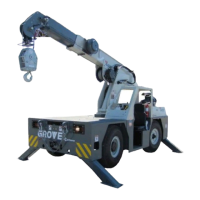
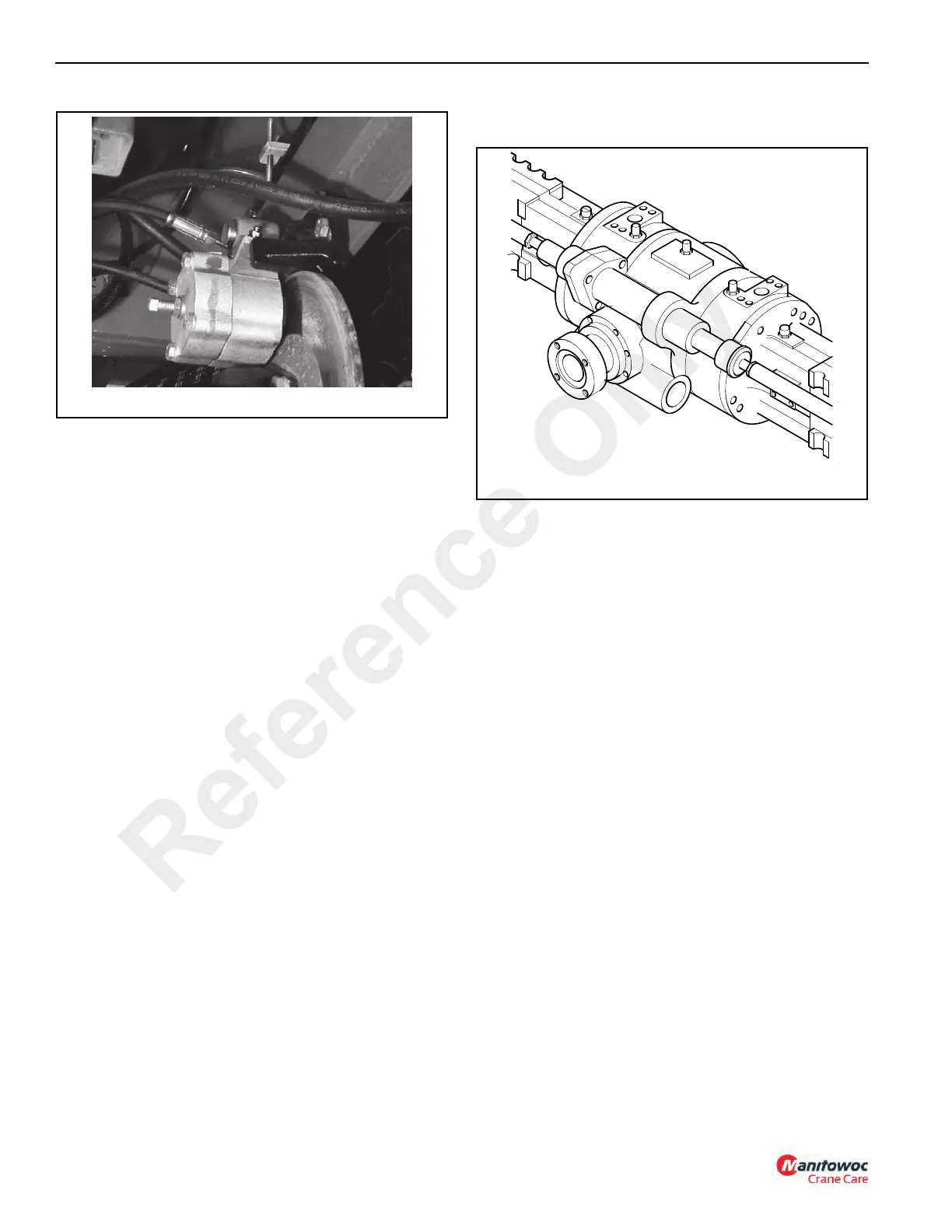